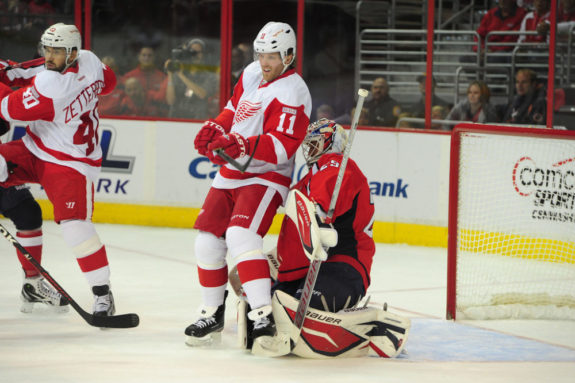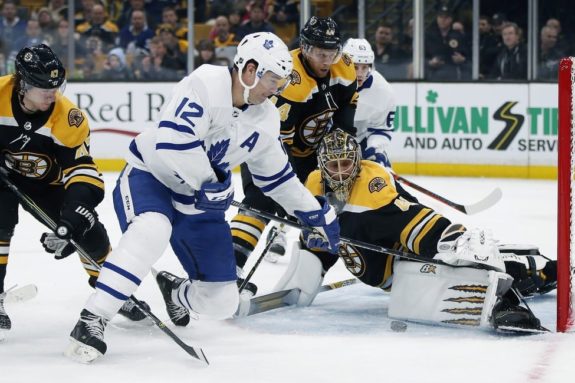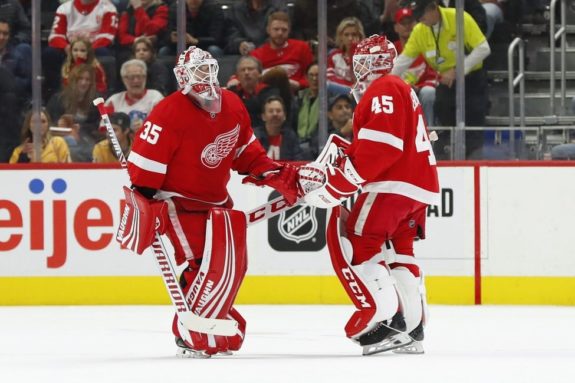As the Detroit Red Wings mature as an organization, they need to continually look for competitive advantages to exploit. Ideally, they should be at the forefront of innovation, not lagging behind.
Managing cap space is no different. Since the salary cap was implemented prior to the 2005-06 season, teams have tried to find loopholes to maximize their spending. Fifteen years later, Steve Yzerman and company need to make every allotted dollar work for them, even if it’s not being spent on players in their lineup.
Let’s take a look at how NHL teams have manipulated the salary cap in the past, why that’s important, and how today’s Red Wings can take steps to create cap efficiencies.
Related: Red Wings Mock Trade Deadline: 4 Crafty Deals
Prior Salary Cap Manipulations
Dating back to the first season with a cap, the Red Wings took a page out of Moneyball and signed bargain free agents with intriguing skill sets—Dan Cleary, Mikael Samuelsson, Andreas Lilja, and Chris Osgood—to round out their roster. Since then, other teams have found efficiencies of their own.

Perhaps the most famous for taking advantage of the salary cap, the Arizona Coyotes acquired the contracts of several players on long-term injured reserve, including Chris Pronger, Marian Hossa, and Dave Bolland. Pavel Datsyuk as well, though his situation was a bit different. In exchange, the Coyotes picked up a pile of draft picks, prospects, and a couple intriguing depth players in Lawson Crouse and Vinnie Hinostroza.
More recently, the Carolina Hurricanes acquired Patrick Marleau’s hefty salary for a first-round pick. While they have dead money on their books this season, a first-round pick is a first-round pick. Similarly, the Golden Knights acquired a slew of assets to take on the contracts of David Clarkson, Mikhail Grabovski, and Jason Garrison as part of their expansion draft.
Finally, teams have also taken steps to maneuver around the salary cap internally. Remember when the Red Wings signed Johan Franzen, Niklas Kronwall, and Henrik Zetterberg to decade-long deals to bring down the average annual value (AAV) of the contract? Though the current collective bargaining agreement closed up that loophole, that was just another way a team took advantage of the system in place. Rostering several players on entry-level contracts—with low cap hits—can save money to use elsewhere in the lineup as well.
Why Should the Red Wings Explore Opportunities?
Apart from actually having cap flexibility, why manipulate the cap now? For starters, the added draft picks and prospects could play a role in the rebuilt Red Wings of the future. Just look at the first-round pick Carolina received to buy out Marleau. If Detroit doesn’t have players to trade away for high draft picks, they should certainly consider using their cap space to do so.

In addition, the Seattle expansion draft isn’t that far off. Teams are already preparing for Vegas 2.0 and the Red Wings could offer to take on a couple ugly contracts for some sort of compensation.
Related: Red Wings: Projected Seattle Expansion Draft Protected List
The potential to add picks and prospects is a no-brainer for a rebuilding team. Steve Yzerman wants to add more to the pipeline and this is just another method to do so.
How Can the Red Wings Take Advantage?
Leading up to the trade deadline, the Red Wings can do a few things to reduce their total cap spend. First, they can move out Mike Green and/or Trevor Daley to teams looking for defensive depth in exchange for draft picks and prospects. They’ll likely need to retain some salary, which is fine – they’re still adding cap space regardless.

Second, the Red Wings could seek out and acquire players with large cap hits just like Arizona and Vegas in previous years. Detroit can leverage their surplus of cap space to acquire troublesome contracts in exchange for picks and prospects. This isn’t the zero-cap-space Red Wings of the 2010s.
In a recent article for The Athletic, Max Bultman suggested David Backes, Cody Ceci, Sven Baertschi, Loui Eriksson, and Kyle Turris as options to do so. (from ‘The Red Wings are flush with cap space. Where can they turn to make it an asset?’ – The Athletic Detroit – 1/28/20) In addition, Martin Hanzal and Brent Seabrook could be considered as well.
And finally, the Red Wings can leverage cost savings of entry-level contracts by giving the open roster spots to young players. This will impact the salary cap more next season, but could also get Moritz Seider and Joe Veleno to their second contract a little sooner, depending on how many games they play with the Red Wings. This could potentially allow the Red Wings to negotiate a lower AAV than if the contract was handed out a year later.
Moving past this season, Yzerman should explore other options to create salary cap efficiencies. For one, they could spend less on goaltending. Regardless of who backs up Jonathan Bernier next year, they should take up less space than Jimmy Howard does this season.

In addition, Detroit’s braintrust should also look to identify new ways to manipulate the cap. Maybe they consider only rostering 22 players for stretches of the 2020-21 season to accumulate more deadline cap space. They could also sign a player to a one-year, low-risk deal with the intention of flipping him at the deadline.
Final Word
If he can do so before the trade deadline, Yzerman should find ways to be creative with the salary cap. The Red Wings can certainly benefit from a competitive advantage like this and speed up the rebuild, even if only by a step or two.
Yzerman could also hold off until the offseason to manipulate the salary cap. Then, he’ll have a better grasp of how much he’ll need to pay his restricted free agents. The contracts of Daley, Green, Howard, and Jonathan Ericsson will also be coming off the books, opening up more space for Yzerman to work with.
Personal finance expert Dave Ramsey once said, “You must gain control over your money or the lack of it will forever control you.” The same can be said about cap space; can the Red Wings gain control?
Get the latest Detroit Red Wings news, rumors, commentary and analysis